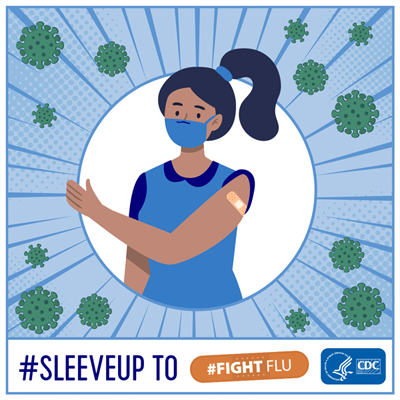Influenza Vaccine Advances
- What is being done to improve influenza vaccines?
- What are the roles of CDC and the other federal agencies working on flu vaccine improvements?
- What advances have been made with flu vaccines in recent years?
- What is the long-term goal of efforts to improve flu vaccines?
- What is CDC currently doing to support development of a universal flu vaccine?
- Where can I get more information about flu vaccine research?
What is being done to improve influenza vaccines?
For more than a decade, collaborative efforts in the United States across the federal government and the private sector have led to improved influenza vaccine technologies that have expanded vaccine supply and/or improved vaccine effectiveness.
To further support improvement of influenza vaccines, the White House issued Executive Order (EO) 13887: Modernizing Influenza Vaccines in the United States to Promote National Security and Public Health on September 19, 2019. The EO established a National Influenza Vaccine Task Force, which CDC is a member of, and calls for the modernization of influenza vaccines and vaccine manufacturing along with increased national influenza vaccination.
What are the roles of CDC and the other federal agencies working on flu vaccine improvements?
Much of the work to improve influenza vaccine technology over the past decade has taken place under the auspices of influenza pandemic preparedness planning which is led by the U.S. Department of Health and Human Services’ Biomedical Advanced Research and Development Authority (BARDA)external icon. BARDAexternal icon is charged with the advanced development and procurement of medical and non-pharmaceutical countermeasures for pandemic influenza preparedness and response, including flu vaccinesexternal icon. The CDC, the Food and Drug Administration (FDA)external icon and the National Institutes of Health (NIH)external icon are partners in this broad inter-agency government effort.
As the nation’s leading public health agency, CDC’s primary role in this effort has been to provide the recommendations for the best public health use of existing influenza vaccines. CDC also plays a leading role in conducting surveillance for, helping to select, and producing vaccine viruses used in flu vaccine production. The agency also supports the development of new and better vaccines. For example, CDC’s Influenza Division is using next generation sequencing and genomic technologies to develop better H3N2 vaccine viruses (that grow well in eggs and that create a good immune response in people). In addition, CDC monitors and reports on the effectiveness of existing influenza vaccines. FDA is the federal regulatory agency responsible for assuring the safety, effectiveness, quality, and security of drugs, vaccines and other biological products and medical devices. NIH is the nation’s medical research agency, a role which includes conducting clinical trials for vaccines.
What advances have been made with flu vaccines in recent years?
- a high dose vaccine that is designed specifically for people 65 and older to create a stronger antibody response;
- a flu vaccine made with adjuvant (an ingredient added to vaccine that helps create a stronger immune response in the patient’s body), was approved for people 65 years of age and older;
- an intradermal vaccine that requires less antigen for an equivalent immune response thus stretching vaccine supply;
- A U.S.-approved cell-based flu vaccine, which can be made more quickly than traditional egg-based vaccines and does not require a large supply of eggs to produce;
- quadrivalent (four component) flu vaccines that protect against both lineages of influenza B viruses thus offering expanded protection against circulating influenza viruses; and,
- the first recombinant influenza vaccines, which can be manufactured more quickly than either egg-based or cell-based vaccines and which does not require an egg-grown vaccine virus nor eggs to produce.
What is the long-term goal of efforts to improve the flu vaccine?
A longer-term goal is the development of a single flu vaccine that would provide safe, effective and long-lasting immunity against a broad spectrum of influenza viruses, both seasonal and novel. A flu vaccine with these qualities is often referred to as a “universal flu vaccine.” Another longer-term goal is to reduce reliance on egg-based methods of flu vaccine manufacturing and to embrace newer vaccine manufacturing technologies that can be used to more quickly respond to novel influenza outbreaks and pandemics.
What is CDC currently doing to support development of a universal flu vaccine?
At this time, CDC is participating in a broad inter-agency partnership coordinated by BARDA that supports the advanced development of new and better influenza vaccines. These efforts already have yielded important successes. Part of this effort is the eventual development of a “universal vaccine” that would offer better, broader and longer-lasting protection against seasonal influenza viruses as well as novel influenza viruses. This task poses an enormous scientific and programmatic challenge, but a number of government agencies and private companies already have begun work to advance development of a universal flu vaccine.
Where can I get more information about flu vaccine research?
More information on this topic is available at:
- The Evolution, and Revolution, of Flu Vaccinesexternal icon on the U.S. Food and Drug Administration website.
- Flu Vaccine Researchexternal icon on the National Institute of Allergy and Infectious Diseases Institute, NIH website.
- BARDA Strategic Plan, 2011-2016external icon
